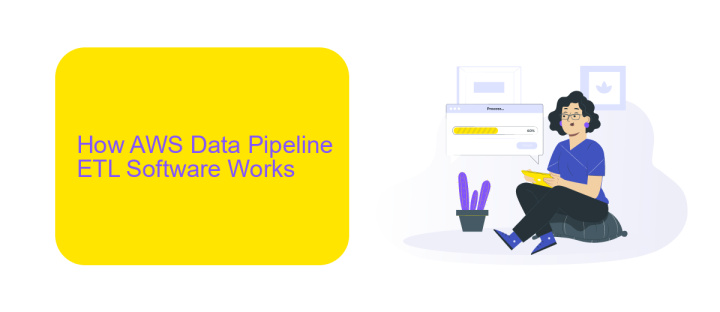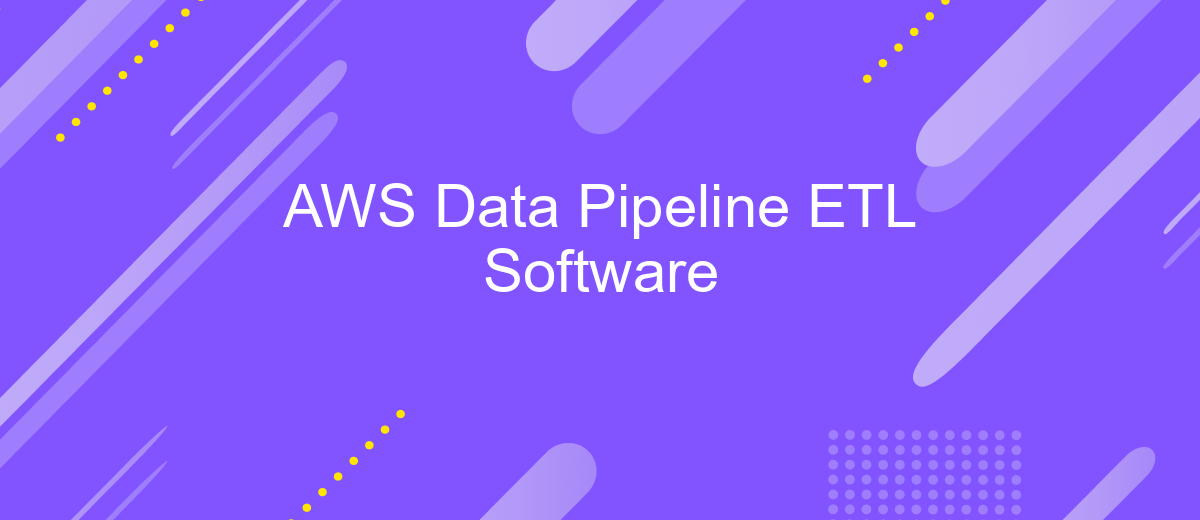AWS Data Pipeline ETL Software
AWS Data Pipeline is a robust ETL (Extract, Transform, Load) service that enables seamless data processing and movement across various AWS services and on-premises data sources. Designed for scalability and reliability, it automates the workflow, ensuring data is efficiently extracted, transformed, and loaded, thus empowering businesses to gain valuable insights and make data-driven decisions.
Introduction to AWS Data Pipeline ETL Software
AWS Data Pipeline is a web service designed to help users reliably process and move data between different AWS compute and storage services. It allows for the creation of complex data workflows that can be scheduled and managed efficiently. This service is particularly useful for ETL (Extract, Transform, Load) processes, enabling seamless data integration and transformation.
- Automated data workflows
- Scalable and reliable data processing
- Integration with various AWS services
- Customizable scheduling options
With AWS Data Pipeline, businesses can streamline their data management tasks, ensuring that data flows smoothly across different systems. For those looking to integrate additional services or automate more complex workflows, tools like ApiX-Drive can be invaluable. ApiX-Drive offers easy-to-use solutions for setting up integrations, allowing users to connect various applications without extensive coding. This enhances the capabilities of AWS Data Pipeline, making it even more powerful and versatile for handling diverse ETL requirements.
How AWS Data Pipeline ETL Software Works

AWS Data Pipeline ETL software automates the process of extracting, transforming, and loading data across various AWS services and on-premises data sources. Users define data-driven workflows and schedule tasks using a simple interface, allowing seamless data movement and transformation. The software supports a wide range of data sources, including Amazon S3, RDS, DynamoDB, and Redshift, ensuring flexibility and scalability for diverse data processing needs.
Integration with third-party services like ApiX-Drive further enhances the capabilities of AWS Data Pipeline. ApiX-Drive facilitates the connection between AWS Data Pipeline and various external applications, enabling automated data transfers and synchronization. This integration streamlines the ETL process, reducing manual intervention and ensuring data consistency across platforms. By leveraging these tools, businesses can efficiently manage and analyze their data, driving informed decision-making and operational efficiency.
Benefits of Using AWS Data Pipeline ETL Software

AWS Data Pipeline ETL Software offers a robust solution for managing data workflows efficiently. It enables seamless data movement and transformation across various AWS services, ensuring data integrity and availability.
- Scalability: Automatically scales to accommodate increasing data volumes without manual intervention.
- Cost-Effectiveness: Pay-as-you-go pricing model helps in managing costs effectively by only paying for the resources used.
- Reliability: Built-in fault tolerance and retry mechanisms ensure data processing continuity.
- Flexibility: Supports various data sources and destinations, allowing for versatile data integration.
- Automation: Schedule and automate data workflows, reducing manual effort and potential errors.
Integrating AWS Data Pipeline with external services like ApiX-Drive can further streamline your ETL processes. ApiX-Drive facilitates easy setup of integrations with numerous applications, enhancing overall data workflow efficiency. This combination offers a powerful, scalable, and reliable ETL solution capable of handling complex data operations with ease.
Case Studies of AWS Data Pipeline ETL Software in Action

A leading e-commerce company leveraged AWS Data Pipeline to streamline their data processing tasks. By automating data workflows, they significantly reduced manual intervention and errors, leading to more reliable data analytics and reporting. The integration with Amazon S3 and Redshift enabled seamless data storage and retrieval.
In another case, a healthcare provider utilized AWS Data Pipeline to manage patient data across multiple systems. This not only ensured compliance with data protection regulations but also improved the efficiency of data retrieval for patient care. The automated ETL processes reduced the time required for data processing and enhanced data accuracy.
- A financial institution used AWS Data Pipeline for real-time fraud detection, integrating data from various sources to identify suspicious activities promptly.
- An educational platform implemented AWS Data Pipeline to analyze student performance data, enabling personalized learning experiences.
- A logistics company optimized their supply chain management by using AWS Data Pipeline to consolidate and analyze shipping data from multiple regions.
ApiX-Drive was instrumental in these integrations, offering a user-friendly interface to connect various data sources effortlessly. Its seamless integration capabilities allowed businesses to focus on insights rather than data management, thereby driving operational efficiency and strategic decision-making.
Technical Considerations and Implementation Best Practices
When implementing AWS Data Pipeline for ETL processes, it is crucial to design data workflows with scalability and reliability in mind. Start by defining clear data sources, transformation logic, and destination targets. Ensure your pipeline can handle varying data volumes by leveraging AWS's auto-scaling capabilities. Additionally, consider using Amazon CloudWatch for monitoring and setting up alerts to promptly address any issues that may arise during data processing.
Integration with other services is often necessary for a holistic ETL solution. Tools like ApiX-Drive can facilitate seamless data integration between AWS Data Pipeline and various third-party applications, enhancing automation and reducing manual intervention. It is also advisable to implement robust error-handling mechanisms and data validation steps within your pipeline to maintain data integrity. Regularly review and optimize your pipeline configurations to ensure optimal performance and cost-efficiency.
FAQ
What is AWS Data Pipeline?
How does AWS Data Pipeline help in ETL processes?
Can I automate data integrations with AWS Data Pipeline?
How do I monitor and manage my AWS Data Pipeline workflows?
What tools can I use to simplify the setup of AWS Data Pipeline integrations?
Apix-Drive is a simple and efficient system connector that will help you automate routine tasks and optimize business processes. You can save time and money, direct these resources to more important purposes. Test ApiX-Drive and make sure that this tool will relieve your employees and after 5 minutes of settings your business will start working faster.

